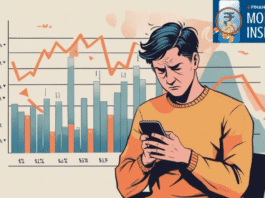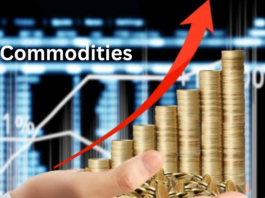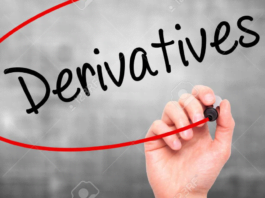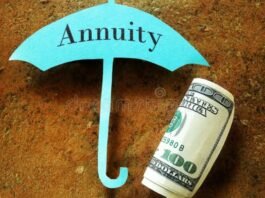Exchange traded funds (ETFs) are investment funds and exchange-traded products, meaning it can be bought and sold on stock exchanges just like an individual stock. ETFs hold a variety of assets such as stocks, bonds, currencies, commodities like gold bars, and even more complex instruments like futures contracts and options. The flexibility and diversity offered by ETFs make them a popular choice among investors.
Understanding ETFs
Exchange-traded funds are registered investment companies under the Securities and Exchange Commission (SEC). This registration ensures that they operate under strict regulatory guidelines aimed at protecting investors. Exchange-traded funds provide a way for investors to pool their money into a fund that invests in a diversified portfolio of assets. In return, investors receive shares in the fund, representing a portion of the fund’s holdings.
Management Styles: Active vs. Passive
Exchange-traded funds can be broadly classified into two categories based on their management style: passive and active.
Passive ETFs
Also known as index funds, passive Exchange-traded funds aim to replicate the performance of a specific index such as the S&P 500 or a sector-specific index. These funds track the underlying index by holding the same securities in the same proportions as the index.
Actively Managed ETFs
Unlike passive ETFs, actively managed Exchange-traded funds have portfolio managers who make decisions about which securities to buy and sell, aiming to outperform a specific benchmark or achieve a particular investment objective. These ETFs can be more expensive due to the active management involved.
How Exchange traded funds Work?
In the U.S., most ETFs are structured as open-ended funds and are governed by the Investment Company Act of 1940, with some modifications under subsequent rules. Open-ended funds do not limit the number of investors, allowing continuous creation and redemption of shares.
For example, Vanguard’s Consumer Staples ETF (VDC) tracks the MSCI US Investable Market Consumer Staples 25/50 Index. With a minimum investment of just $1.00, investors can own a fraction of a share in this fund, which includes holdings in well-known companies like Procter & Gamble, Costco, Coca-Cola, Walmart, and PepsiCo. The share price of an ETF fluctuates throughout the trading day based on market demand, unlike mutual funds, which are priced once at the end of the trading day.
Types of ETFs
ETFs come in various forms, catering to different investment needs and strategies:
Stock ETFs
These ETFs consist of a basket of stocks, typically tracking a specific industry or sector such as technology or healthcare. They provide diversified exposure to that sector without the need to invest in individual stocks.
Bond ETFs
These are designed to provide regular income and can include government, corporate, and municipal bonds. Unlike the underlying bonds, bond ETFs do not have a maturity date.
Commodity ETFs
These ETFs invest in commodities like gold, silver, crude oil, or agricultural products. They offer an easy way to invest in commodities without having to physically purchase them.
Currency ETFs
These track the performance of currency pairs, allowing investors to speculate on currency movements or hedge against currency risks.
Inverse ETFs
These are designed to profit from a decline in the value of an underlying benchmark by shorting stocks. They are often structured as exchange-traded notes (ETNs).
Leveraged ETFs
These seek to amplify the returns of the underlying index by using financial derivatives and debt. For example, a 2× leveraged ETF aims to return twice the performance of the underlying index.
Bitcoin ETFs
The recently approved spot Bitcoin ETFs hold actual bitcoins as the underlying asset, allowing investors to gain exposure to Bitcoin’s price movements through traditional brokerage accounts.
Pros and Cons of ETFs
Pros
Diversification: ETFs provide access to a wide range of securities across various industries and asset classes.
Lower Costs: Generally, Exchange traded funds have lower expense ratios compared to mutual funds.
Liquidity: Exchange traded funds can be bought and sold throughout the trading day at market prices.
Flexibility: Investors can use Exchange traded funds for different strategies such as income generation, speculation, and hedging.
Cons
Higher Fees for Active Management: Actively managed Exchange traded funds can have higher fees than passive ones.
Sector-Specific Risks: ETFs focusing on a specific industry or sector can limit diversification.
Liquidity Issues: Some Exchange traded funds may suffer from lack of liquidity, impacting their tradeability.
Investing in Exchange traded funds
ETFs can be purchased through online brokers and traditional broker-dealers. Many platforms offer commission-free trading of Exchange traded funds, making them an attractive option for cost-conscious investors. ETFs are also available for investment in retirement accounts like IRAs.
When selecting an ETF, investors should consider factors such as trading volume, expense ratios, past performance, holdings, and commission costs. Using an Exchange traded fund screening tool can help narrow down the choices based on these criteria.
Popular ETFs
Some widely recognized ETFs include:
SPDR S&P 500 (SPY): Tracks the S&P 500 Index, the oldest and one of the most popular ETFs.
iShares Russell 2000 (IWM): Tracks the Russell 2000 small-cap index.
Invesco QQQ (QQQ): Tracks the Nasdaq 100 Index, predominantly comprising technology stocks.
SPDR Dow Jones Industrial Average (DIA): Tracks the Dow Jones Industrial Average.
Sector ETFs: These include ETFs that focus on specific sectors such as energy (XLE), financial services (XLF), and biotechnology (BBH).
Commodity ETFs: Examples include gold (GLD), silver (SLV), crude oil (USO), and natural gas (UNG).
Country ETFs: Track the primary stock indexes of foreign countries, such as China (MCHI), Brazil (EWZ), Japan (EWJ), and Israel (EIS).
ETFs vs. Mutual Funds vs. Stocks
While ETFs, mutual funds, and stocks all offer unique advantages and drawbacks, ETFs provide a middle ground combining features of both mutual funds and individual stocks.
Feature ETFs Mutual Funds Stocks
Trading Throughout the trading day like stocks Once at the end of the trading day Throughout the trading day
Pricing Market prices; can trade at a premium/discount Net asset value (NAV) at the end of the day Market prices
Fees Generally lower than mutual funds Higher administrative and marketing fees No ongoing fees
Ownership Do not involve actual ownership of securities Own the securities in their basket Physical ownership of securities
Diversification Broad, spanning multiple asset classes Broad, spanning multiple asset classes Concentrated in individual stocks
Tax Efficiency High due to in-kind exchanges Moderate, depends on fund structure Taxed on ordinary income or capital gains
Dividends and Taxes
ETF investors benefit not only from capital gains but also from dividends paid by the underlying securities. Exchange traded funds are generally more tax-efficient than mutual funds because of their unique structure, which minimizes the need for the fund sponsor to sell shares and incur capital gains taxes.
Creation and Redemption Mechanism
Exchange trade funds operate on a creation and redemption mechanism facilitated by authorized participants (APs). APs buy shares of the underlying securities and exchange them with the ETF sponsor for ETF shares (creation). Conversely, APs can also redeem ETF shares for the underlying securities, reducing the number of ETF shares in circulation (redemption). This process helps keep the ETF’s market price in line with its NAV.
ETFs in the United Kingdom
The U.K. boasts a robust ETF market, with Exchange traded funds listed on the London Stock Exchange (LSE) offering exposure to various asset classes. U.K. investors can include ETFs in Individual Savings Accounts (ISAs), benefiting from tax efficiencies. While U.S.-listed Exchange trade funds are generally not available to U.K. investors due to regulatory restrictions, there are U.K.-based ETFs that track U.S. markets and are UCITS-compliant.
The First Exchange-Traded Fund
The SPDR S&P 500 ETF (SPY), launched by State Street Global Advisors in 1993, is widely regarded as the first Exchange traded fund. However, similar products like Index Participation Units on the Toronto Stock Exchange predated it, offering a way to track the Toronto 35 Index since 1990.
ETFs vs. Index Funds
While both ETFs and index funds aim to track the performance of a specific index, Exchange trade funds are generally more cost-effective and liquid. Exchange traded funds can be traded throughout the day, whereas index mutual funds can only be traded at the end of the day at the NAV.
Diversification with ETFs
Exchange traded funds inherently offer diversification benefits compared to individual stocks. However, the degree of diversification can vary significantly among ETFs. Some Exchange traded funds may be highly concentrated in a few holdings, while others spread their investments across a broad range of securities and sectors.
Conclusion
Exchange traded funds have revolutionized the way investors approach portfolio building, offering a flexible, cost-effective, and diversified investment option. Whether you’re a seasoned investor or just starting, understanding the different types of Exchange traded funds and their unique characteristics can help you make informed investment decisions. With the ability to trade throughout the day, low expense ratios, and a variety of investment options, Exchange traded funds are an essential tool in the modern investor’s toolkit.
Exchange traded funds are not just financial instruments; they are gateways to a diversified, flexible, and potentially rewarding investment journey. As you delve into the world of Exchange trade funds, remember to consider your investment goals, risk tolerance, and the specific characteristics of each Exchange traded fund to make the most informed choices. Happy investing!
Discover more from currentnewschannel.com
Subscribe to get the latest posts sent to your email.













